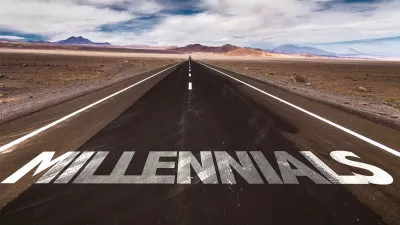...38 million people are already here, explains USC Professor Dowell Myers in response to the question, "Is California's growth slow-down a problem?" Myers new research is on the implications of the state's baby bust.
Rachael Myrow interviews University of Southern California Professor Dowell Myers on his research published last month, "California's Diminishing Resource: Children (PDF)". The five-minute interview can be found on The California Report. While there is no accompanying text, Myrow's blog does include exact quotes and serves as an excellent summary of the interview.
According to Myers, who "analyzed data from the 2010 census and the American Community Survey....California faces a potential demographic disaster" as the Baby Boomers enter retirement age. In addition to a reduced birth rate, migration from other states has reversed - more out than in, and immigration as slowed drastically. The implications are serious.
In 1970, California averaged 21 seniors for every 100 working-age adults. By 2030, that ratio is expected to rise to 36 seniors for every 100 working-age adults. The pool of retirees at any given time relies on the pool of working adults to pay the taxes that support the social safety net - and to buy the houses of Baby Boomers planning to finance their retirement in Palm Springs with the proceeds.
The state's Dept. of Finance released population growth projections on Jan. 31 that are consistent with Myer's report. The state's population is expected to reach 50 million by 2049, according to the very detailed 4-page press release, including additional charts and maps (PDF). The Sacrament Bee's Phillip Reese and Anita Creamer write that according to that report, "California's long run as a boom state will sputter to an end as population growth rates consistently fall below 1 percent a year." While the implications for the economy, particularly the housing market, are serious, "(m)any will nonetheless welcome a pause. As [Jeff Michael, director of the Business Forecasting Center at the University of the Pacific] and others noted, population growth has also fed the sprawl, traffic and pollution that have diminished the state's reputation."
Sacramento Bee columnist Dan Walters writes about the changing ethnic composition of the state that will occur this year.
By the middle of this year, demographers believe, Latinos will achieve numerical parity with whites in California's population, at about 39 percent each. Thereafter, the gap between the state's two largest ethnic blocs will widen steadily.
Putting it another way, the state's population is expected to grow by 15.4 million between 2010 and 2060, and Latinos will account for 11.3 million of that growth.Or still another way: Overall growth over the 50-year period will be 41 percent, but the Latino population will grow by 80 percent, while that of whites by a minuscule 4 percent.
FULL STORY: California's Baby Boomers on Track to Overwhelm State's Younger Working Adults

Alabama: Trump Terminates Settlements for Black Communities Harmed By Raw Sewage
Trump deemed the landmark civil rights agreement “illegal DEI and environmental justice policy.”

Planetizen Federal Action Tracker
A weekly monitor of how Trump’s orders and actions are impacting planners and planning in America.

Why Should We Subsidize Public Transportation?
Many public transit agencies face financial stress due to rising costs, declining fare revenue, and declining subsidies. Transit advocates must provide a strong business case for increasing public transit funding.

How Housing as a Financial Product Harms Communities
Institutional buyers who treat housing as an investment product become disconnected from the impacts of higher rents, displacement, and housing instability.

Blinded by the Light: When Brighter Headlights Decrease Safety
Bright LED headlights can create glare and reduce visibility for other drivers and pedestrians.

Study Links Covid and Poor Driving
The effects of the virus, including ‘brain fog,’ can make driving more difficult and dangerous.
Urban Design for Planners 1: Software Tools
This six-course series explores essential urban design concepts using open source software and equips planners with the tools they need to participate fully in the urban design process.
Planning for Universal Design
Learn the tools for implementing Universal Design in planning regulations.
Caltrans
Smith Gee Studio
Institute for Housing and Urban Development Studies (IHS)
City of Grandview
Harvard GSD Executive Education
Toledo-Lucas County Plan Commissions
Salt Lake City
NYU Wagner Graduate School of Public Service





























